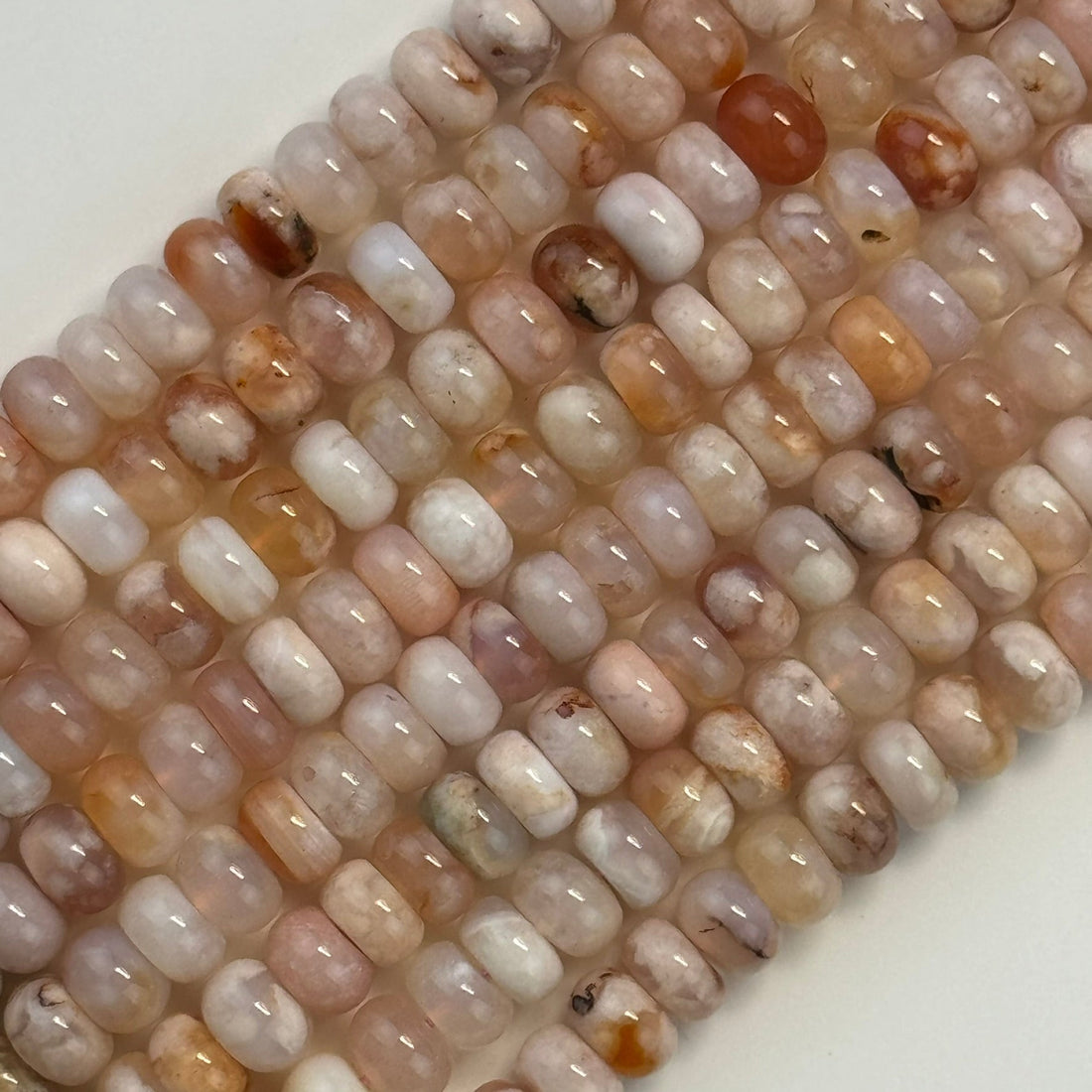
Sakura Agate: The Scientific Beauty of Flower-Like Patterns
Share
Sakura Agate, also known as Cherry Blossom Agate, is a stunning variety of chalcedony that has captured the fascination of geologists and jewelry makers alike. Characterized by its soft pink hues and delicate, flower-like inclusions, this gemstone resembles blooming cherry blossoms frozen in time. In this article, we will explore the unique geological formation of Sakura Agate, its mineral composition, and its value in the world of jewelry making. If you are looking for high-quality Sakura Agate and other agate gemstone beads, visit this exclusive collection.
Geological Formation and Composition
Sakura Agate is a type of plume agate, meaning that its distinctive floral patterns result from the presence of mineral inclusions trapped within chalcedony as it forms. The stone is composed primarily of silicon dioxide (SiO2) and forms in volcanic rock cavities where mineral-rich fluids deposit layers over thousands of years. The unique "blossoms" are actually aggregates of crystallized quartz and other trace minerals that create the illusion of soft petals floating within the stone.
for checking beads collection click here.
This rare agate is predominantly found in Madagascar, where volcanic activity and hydrothermal processes have created the perfect conditions for its development. Unlike other agates that exhibit defined banding, Sakura Agate showcases more organic, free-form structures, enhancing its aesthetic appeal for jewelry artisans. Browse a variety of Sakura Agate and other agate beads at this gemstone bead collection.
Scientific Significance and Visual Appeal
What makes Sakura Agate particularly intriguing is its internal structure. Under magnification, the "blossoms" within the stone reveal radial quartz crystal growth, which results from slow and controlled crystallization. This process leads to the formation of intricate, petal-like shapes that resemble cherry blossoms in full bloom.
From a mineralogical perspective, the variation in color and opacity within Sakura Agate is influenced by trace elements such as iron and manganese. These elements contribute to the warm pink, peach, and beige tones found in the stone, giving it a soft and feminine appeal. Due to these fascinating characteristics, Sakura Agate is not only valued for jewelry but also studied in geological research as an example of plume agate formation.
interested in beads? just click here.
Jewelry-Making Benefits and Uses
Sakura Agate is a highly sought-after gemstone for jewelry makers due to its durability and visual appeal. With a Mohs hardness rating of 6.5 to 7, it is resilient enough for various applications, including rings, pendants, and statement bracelets. The soft pastel tones and floral inclusions make it an ideal choice for nature-inspired jewelry pieces.
Additionally, the versatility of Sakura Agate allows it to be incorporated into both contemporary and vintage-style designs. Whether used in bead stringing, wire wrapping, or cabochon settings, this gemstone provides endless creative possibilities. If you are a jewelry artisan or enthusiast looking for exquisite Sakura Agate beads, explore the options available in this curated agate gemstone collection.
Conclusion
Sakura Agate is a remarkable gemstone that seamlessly combines geological wonder with artistic beauty. Its unique crystallization process and delicate floral inclusions make it a prized material for both scientific study and jewelry craftsmanship. Whether admired for its scientific intrigue or incorporated into breathtaking jewelry designs, Sakura Agate remains a favorite among collectors and artisans. To find premium Sakura Agate and other agate gemstone beads, visit this agate gemstone bead collection.